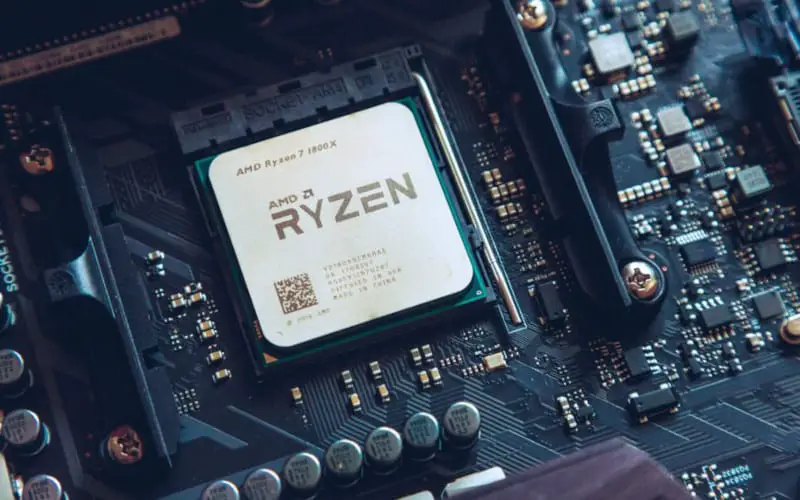The central processing unit, or CPU, is the computer component carrying out instructions and calculations. The graphics processing unit (GPU) is a specialized processor designed to handle the complex tasks of rendering images and video.
An accelerated processing unit (APU) combines the capabilities of a CPU and GPU into a single chip, enabling a computer to perform both general and graphical processing tasks efficiently.
In this article, we’ll delve into the differences between CPUs, GPUs, and APUs and explore how they work together to modern power computers.
CPU: The Heart of a Computer
The CPU is the primary component of a computer that performs most of the processing tasks. It comprises one or more microprocessors, each containing a central processing unit (CPU) that executes instructions and performs calculations.
A CPU consists of several parts, including:
- Arithmetic logic unit (ALU): performs arithmetic and logical operations
- Control unit: fetches instructions from memory and decodes them
- Registers: temporary storage locations for data and instructions
- Cache: fast memory used to store frequently accessed data

A system bus connects The CPU to other computer components, such as memory, storage, and input/output (I/O) devices. It communicates with these components using a set of protocols called the bus architecture.
The CPU speed is measured in Hertz (Hz), which refers to the number of instructions it can execute per second. Higher clock speeds mean a CPU can perform more instructions in a given time, resulting in faster overall performance.
GPU: The Graphics Processor
A GPU is a specialized processor designed to handle the complex tasks of rendering images and video. It comprises hundreds or thousands of smaller processing units called cores, which work together to perform graphical processing tasks in parallel.
Unlike the CPU, which is designed to handle a wide range of tasks, the GPU is optimized for performing the same set of tasks over and over again quickly. This makes it particularly well-suited for handling repetitive calculations in rendering graphics and video.
A GPU consists of several parts, including:
- Cores: small processing units that perform graphical processing tasks
- Memory: fast memory used to store data and instructions
- Input/output (I/O) units: connect the GPU to other components of the computer
The performance of a GPU is measured in floating point operations per second (FLOPS), which refers to the number of calculations it can perform. Higher FLOPS ratings indicate a faster and more powerful GPU.
APU: The All-in-One Processor
An Accelerated Processing Unit (APU) is a type of processor that combines the capabilities of a CPU and GPU into a single chip developed by AMD. It’s designed to handle both general and graphical processing tasks efficiently, making it well-suited for use in laptops, tablets, and other devices that require a balance of performance and power efficiency.
An APU consists of a CPU and GPU, as well as:
- Memory controller: manages communication between the CPU, GPU, and system memory
- I/O controller: manages communication between the APU and other components of the computer
The performance of an APU is typically measured in FLOPS and clock speed, with higher numbers indicating better performance.
How CPUs, GPUs, and APUs Work Together
In a typical computer, the CPU and GPU work together to perform the tasks required by the operating system and applications. The CPU executes instructions and performs calculations, while the GPU specializes in graphical processing tasks.
The CPU fetches instructions from memory and decodes them, then sends them to the appropriate component for execution. If the instruction involves a graphical processing task, the CPU sends it to the GPU to be executed. If it’s a general processing task, the CPU executes it.
The GPU is connected to the CPU through a high-speed connection called the PCI Express (PCIe) bus. This allows the GPU to quickly transfer data and instructions to and from the CPU as needed.
In an APU, the CPU and GPU are integrated into a single chip, simplifying communication between the two components.
This can help improve overall performance and power efficiency, as the APU can execute instructions and perform calculations more quickly and efficiently than if the CPU and GPU were separate components.
Advantages and Disadvantages of CPUs, GPUs, and APUs
Each processor type has advantages and disadvantages, making them better suited for different tasks and applications. CPUs are generally the most powerful processor type, with high clock speeds and a wide range of capabilities.
They’re well-suited for handling various tasks, including general processing, I/O, and data management. However, they can be less efficient at performing graphical processing tasks, which is where GPUs excel.
GPUs are specialized processors designed specifically for handling graphical processing tasks. They have many cores and are optimized for performing the same tasks over and over again quickly.
This makes them particularly well-suited for handling the repetitive calculations in rendering graphics and video. However, they may not be as versatile as CPUs, as they’re not designed to handle many tasks.
APUs combine the capabilities of a CPU and GPU into a single chip, which can improve overall performance and power efficiency. They’re well-suited for use in laptops, tablets, and other devices that require a balance of performance and power efficiency.
However, they may not be as powerful as separate CPU and GPU components, as the limited space on a single chip can limit the number of cores and other features that can be included.
Choosing the Right Processor for Your Needs
When choosing a processor for your computer, it’s important to consider the tasks you’ll be performing and the type of applications you’ll be using.
A CPU is likely to be sufficient for general-purpose computing tasks, such as word processing, web browsing, and data management. If you’re a gamer or use applications that require a lot of graphical processing, such as video editing software, a GPU or APU may be a better choice.
Ultimately, the suitable processor will depend on your specific needs and budget. Consider your usage patterns and the type of applications you’ll be running to determine the best processor for your needs.
How CPUs, GPUs, and APUs Have Evolved
Over the years, processors have significantly changed their design, capabilities, and performance.
Early CPUs were relatively simple, with a single microprocessor that executed instructions sequentially. As computers became more powerful and sophisticated, CPUs began to incorporate multiple microprocessors and features such as out-of-order execution, which allowed them to execute instructions more efficiently.
GPUs were developed in the 1990s to offload graphical processing tasks from the CPU, which is struggling to keep up with the increasing demands of modern applications.
Initially, GPUs were simple processors with few cores, but they quickly evolved to become more powerful and sophisticated. Modern GPUs have hundreds or thousands of cores and can perform billions of calculations per second.
APUs were developed more recently to combine the capabilities of a CPU and GPU into a single chip. They offer the benefits of both types of processors, with the ability to handle both general and graphical processing tasks efficiently.
APUs have become increasingly popular in laptops, tablets, and other portable devices that require a balance of performance and power efficiency.
Related: How To Update BIOS Without CPU?
Is An APU Good for Gaming?
An AMD APU is a great option for gamers looking for an affordable way to get the most bang for their buck. Its integrated graphics processing unit will give you better gaming performance than if your computer only had a CPU and no GPU.

Plus, it can be more cost-effective than purchasing both components separately because the APU combines the functions of both a CPU and a GPU into one chip. That said, remember that an APU may not match the level of performance offered by high-end GPUs.
However, with AMD’s latest offerings putting out competitive frames per second in even the newest game releases, there’s no denying that they make an excellent choice for budget-minded gamers.
Can An APU Work With A GPU?
Having an APU and a GPU in a gaming laptop is becoming increasingly popular. The APU will take care of lighter tasks, such as powering the display, while the dedicated GPU kicks in when the demands become more intense.
There’s no need to replace the APU when buying a graphics card for your PC; instead, you can purchase both components separately and add them to your system whenever needed or when your budget allows.
In gaming desktops, it is typical to use only the GPU to get maximum performance, as this GPU also drives the display output. Using an APU and a GPU can be beneficial to ensure optimal game performance and avoid any lags or slowdowns.
Conclusion
CPUs, GPUs, and APUs are all critical components of modern computers, each with its unique capabilities and uses. Understanding the differences between these processors can help you choose the right one for your needs and make the most of your computer’s performance.
CPUs are the primary processors in a computer and are responsible for executing instructions and performing calculations. GPUs are specialized processors designed for handling graphical processing tasks, such as rendering images and video.
APUs combine the capabilities of a CPU and GPU into a single chip, enabling a computer to perform both general and graphical processing tasks efficiently.
Regardless of which type of processor you choose, it’s important to consider your specific needs and budget to ensure that you get the best performance for your money.
Frequently Asked Questions
How Much RAM Does APU Use?
If you want to buy an APU, consider its RAM usage. Unlike a CPU and GPU installed on separate integrated circuits, the single IC of an APU means no dedicated memory for the GPU.
This means that a portion of the system’s main memory is also used as video RAM. We recommend having at least 16GB of RAM available in a dual-channel architecture – two 8GB sticks to avoid potential performance issues.
With this amount of RAM, you can expect your APU to run smoothly.
Will APU Replace GPU?
No. Although an APU includes built-in graphics capabilities, it cannot handle AAA games like a dedicated GPU. This is because an APU combines both CPU and GPUs in one unit.
However, suppose the budget is limited. Investing in an APU may be a viable option instead of purchasing separate units for CPU and GPU. In that case, this combination will still improve performance than the standard CPU alone.
Although choosing between the two comes down to individual preference and budget, a fully powered GPU is essential for users wanting powerful graphical capabilities for rendering or gaming.







